AI Chatbots Transforming Websites: Real Success Stories

Have you noticed how websites today seem to know exactly what you need? That’s the magic of AI-powered assistants like chatbots. These clever tools are changing how businesses connect with customers. For instance, AI chatbots can handle up to 5,000 queries per second, cutting response times by 99%. They also improve engagement rates by 80%, making every interaction feel personal. Companies like Sobot use AI-driven conversational bots to simplify customer service. These chatbots don’t just save time; they’re expected to save businesses over 2.5 billion hours by 2030. If you’re wondering how to integrate AI chatbot in website seamlessly, keep reading to see how it’s done.
The Benefits of AI Chatbots for Customer Service
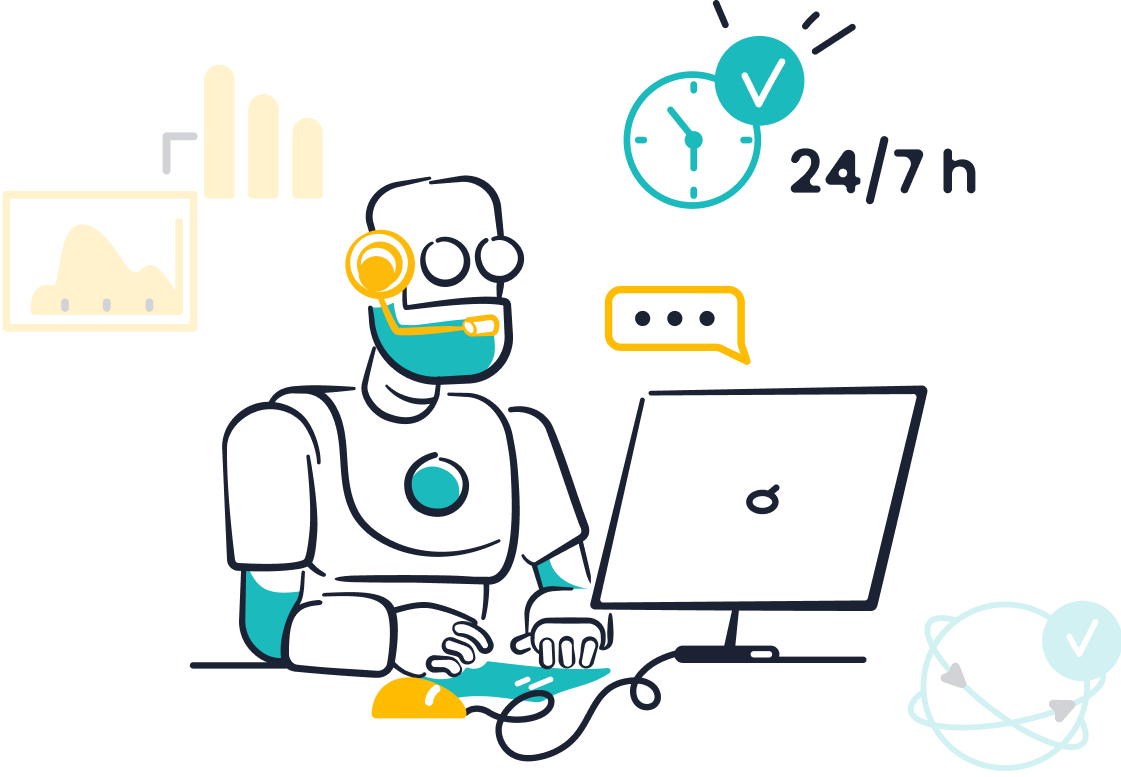
Enhancing Customer Support with AI Chatbots
AI chatbots are reshaping customer support across industries. They’re like virtual assistants that never sleep, offering instant client support whenever your customers need it. Whether it’s answering FAQs or guiding users through complex processes, chatbots make customer service faster and more efficient.
Take retail, for example. Chatbots provide virtual shopping assistance, helping customers find products and offering personalized recommendations. In healthcare, they schedule appointments and deliver instant medical advice, reducing wait times for patients. Here’s a quick snapshot of how different industries benefit:
| Industry | Impact of AI Chatbots | Benefits |
|---|---|---|
| Retail | Customized recommendations, fast responses, and virtual shopping assistance | Enhanced customer experience and increased sales efficiency |
| Healthcare | Instant medical advice, appointment scheduling, and patient monitoring | Reduced wait times, improved patient care, and decreased workload for healthcare staff |
| Finance | Facilitation of financial operations like checking balances and transferring funds | Increased convenience for clients and streamlined financial processes |
| Hospitality | Streamlining operations and enhancing guest services | Improved guest satisfaction, loyalty, and overall business growth |

Sobot’s customer service chatbot stands out by offering multilingual support and omnichannel capabilities. It ensures your customers get a conversational experience tailored to their needs, no matter the platform they prefer.
Reducing Response Times and Improving Efficiency
Nobody likes waiting, especially when they need help. AI chatbots eliminate delays by responding instantly. Delta Airlines, for instance, reduced response times from 4 hours to just 2 minutes by using optimized templates and chatbots. PhonePe automated 60% of customer queries, showcasing how chatbots streamline operations.
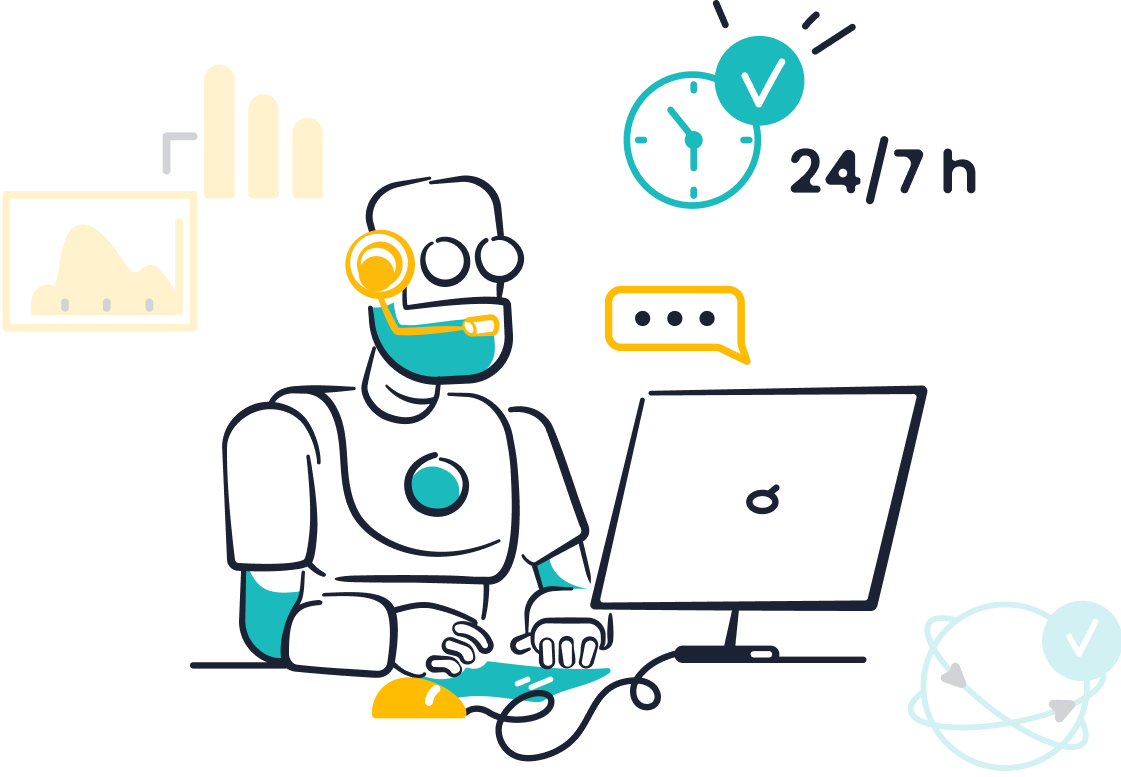
Chatbots also work 24/7, ensuring your customers always have access to support. This round-the-clock availability boosts efficiency and reduces the workload on human agents. Sobot’s chatbot takes this a step further by autonomously solving regular queries, improving productivity by 70%. It’s like having a super-efficient team member who never takes a break.
Personalizing Customer Interactions with AI
AI chatbots don’t just answer questions—they create a personalized experience for every customer. By analyzing customer data, they tailor responses to individual needs. For example, a marketing chatbot can suggest products based on browsing history or send proactive messages about upcoming sales.
Sobot’s chatbot uses a knowledge base built from articles, PDFs, and text snippets to deliver accurate replies. It also integrates seamlessly with CRM systems, ensuring every customer interaction feels personal and meaningful. This level of personalization builds trust and keeps customers coming back.
Cost-Effectiveness and Scalability for Businesses
When it comes to saving money and scaling operations, AI chatbots are a game-changer. Imagine replacing a team of ten agents with a single chatbot that works 24/7. Sounds too good to be true? Let’s break it down.
Here’s a quick comparison of costs and efficiency between human agents and chatbots:
| Aspect | Human Agents | Chatbots |
|---|---|---|
| Monthly Cost | $3,873 per agent | $500 - $5,000 |
| Available Hours | 40 hours/week | 24/7 operation |
| Query Capacity | 1 query at a time | Multiple queries simultaneously |
| Training Costs | Ongoing training required | Initial setup and occasional updates |
| Example Monthly Cost | $38,730 (10 agents) | $12,746 (2 agents + chatbot cost) |
| Potential Savings | N/A | $25,984 (67% reduction) |
As you can see, chatbots drastically reduce operational costs while handling more queries at any given time. Sobot’s chatbot, for instance, not only cuts expenses by up to 50% but also improves productivity by 70%. It’s like hiring a super-efficient employee who never takes a day off.
Now, let’s talk about return on investment (ROI). Say you invest $10,000 in a chatbot. Here’s what you can expect:
- The chatbot saves your business $30,000 in operational costs.
- ROI = (Gains - Cost) / Cost = ($30,000 - $10,000) / $10,000 = 200%.
- For every dollar you spend, you gain two dollars in return.
This level of cost-effectiveness makes chatbots an obvious choice for businesses looking to scale. Whether you’re a small startup or a global enterprise, tools like Sobot’s chatbot help you grow without breaking the bank. Plus, with features like multilingual support and omnichannel integration, scaling your customer service has never been easier.
Tip: Start small by automating FAQs and gradually expand your chatbot’s capabilities. This approach ensures a smooth transition and maximizes your ROI.
How to Integrate AI Chatbot in Website Successfully
Key Steps for Seamless Integration
Integrating an AI chatbot into your website might sound complex, but it’s easier than you think when you follow the right steps. Here’s a simple roadmap to help you achieve seamless integration:
- Generate Chat Widget Code: Start by obtaining the chatbot’s code snippet from your provider.
- Add the Widget to Your Site: Insert the code into your website’s HTML. This step ensures the chatbot appears where your visitors need it most.
- Customize Appearance: Match the chatbot’s design to your website’s branding. A cohesive look builds trust.
- Set Up Welcome Messages: Create friendly greetings to engage users right away.
- Configure Chatbot Responses: Train the chatbot to handle FAQs and provide accurate answers.
- Integrate with Your CRM: Connect the chatbot to your CRM for seamless data flow and personalized interactions.
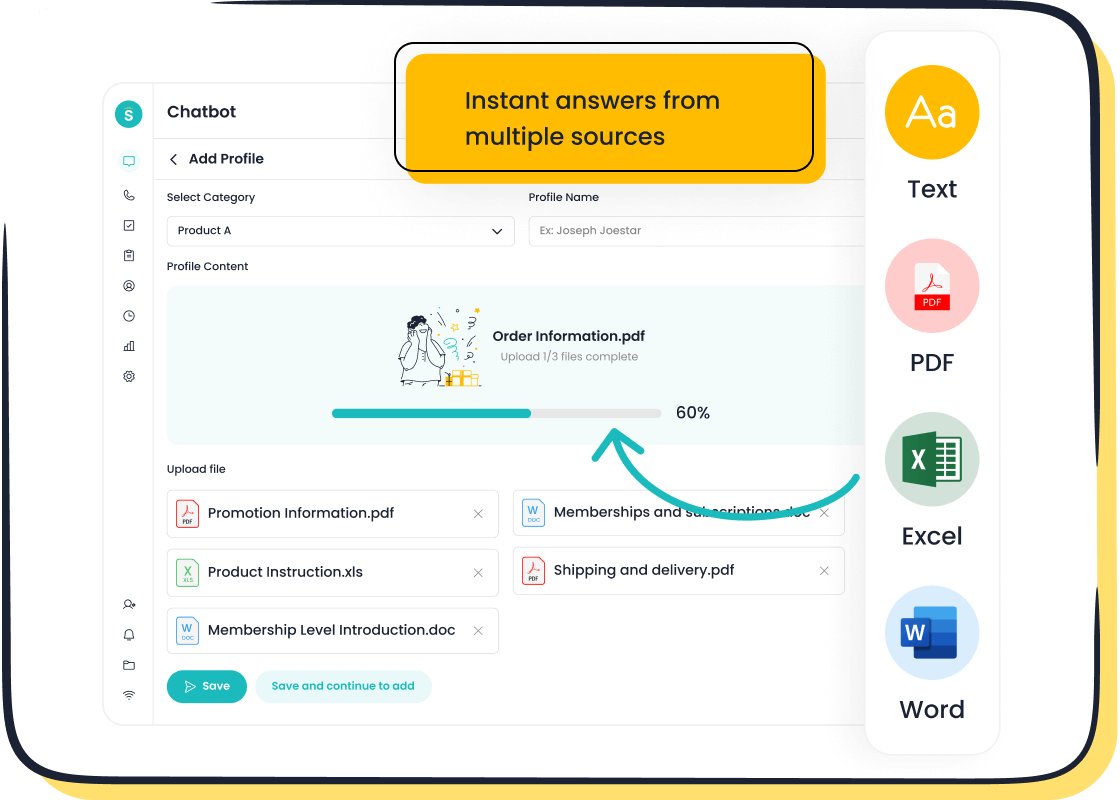
Websites that follow these steps often see a 23% boost in conversion rates and resolve tickets 18% faster. With Sobot’s chatbot, you can simplify this process using its no-coding-required interface. It’s designed for businesses of all sizes, making integration a breeze.
Leveraging Sobot's Chatbot for Omnichannel Support
Imagine a customer reaching out through WhatsApp, another via email, and a third on your website. Managing all these channels can feel overwhelming. That’s where Sobot’s chatbot shines. It offers omnichannel support, meaning it connects with platforms like WhatsApp, SMS, and social media to unify customer interactions.
Here’s how Sobot’s chatbot performs:
| Metric | Value |
|---|---|
| Reduction in inbound discussion | 20% |
| Positive feedback rate | 96%+ |
| Correct answers rate | 80% |
| Customer satisfaction rate | 95% |
| Self-service question resolution | 22.2% |
| Customer satisfaction score (CSAT) | 97% |
| Problem resolution rate | 85% |
| Customer happiness rate | 99% |
These numbers highlight how Sobot’s chatbot not only improves efficiency but also enhances customer satisfaction. By integrating it into your website, you can deliver consistent, high-quality support across all channels.
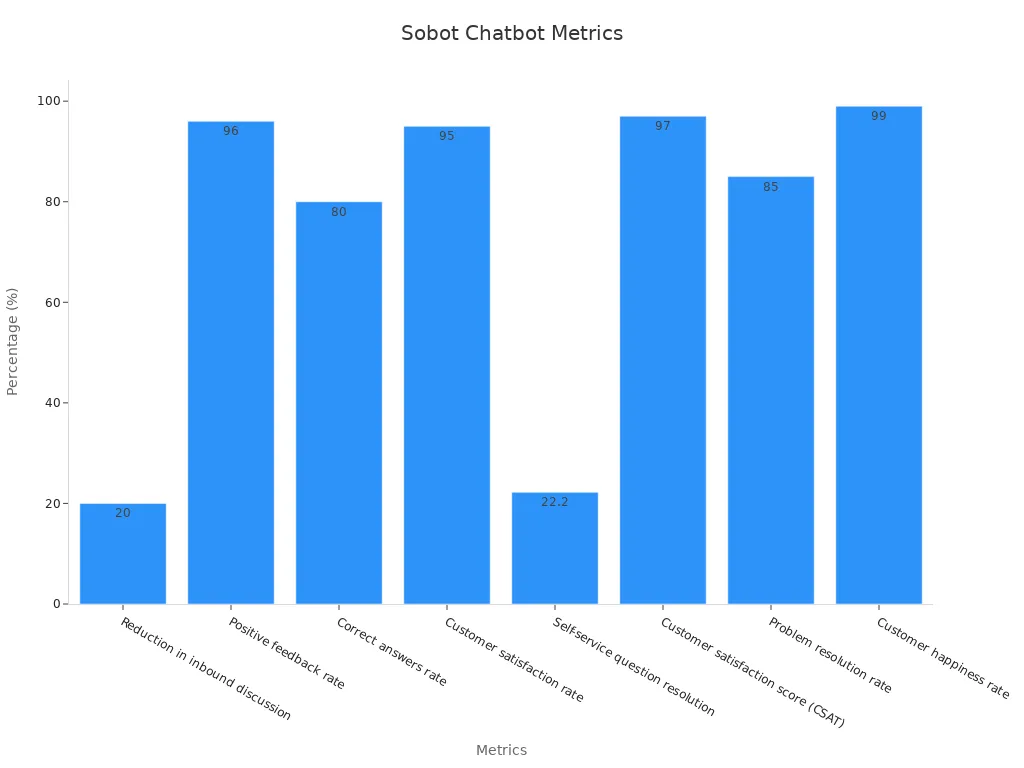
Ensuring Data Privacy and Security in Chatbot Deployment
When deploying an AI chatbot, data privacy and security should be your top priorities. Chatbots often handle sensitive information like personal identifiers and payment details. A single breach can compromise customer trust and lead to hefty fines.
To protect your data, adopt these best practices:
- Use secure APIs to connect your chatbot with other systems.
- Regularly update the chatbot to patch vulnerabilities.
- Encrypt all data to prevent unauthorized access.
Sobot’s chatbot prioritizes security by adhering to strict data protection standards. Its robust architecture ensures your customer data remains safe, fostering trust and compliance with regulations. By taking these steps, you can confidently integrate an AI chatbot into your website while safeguarding sensitive information.
Real Chatbot Examples in E-Commerce and Beyond
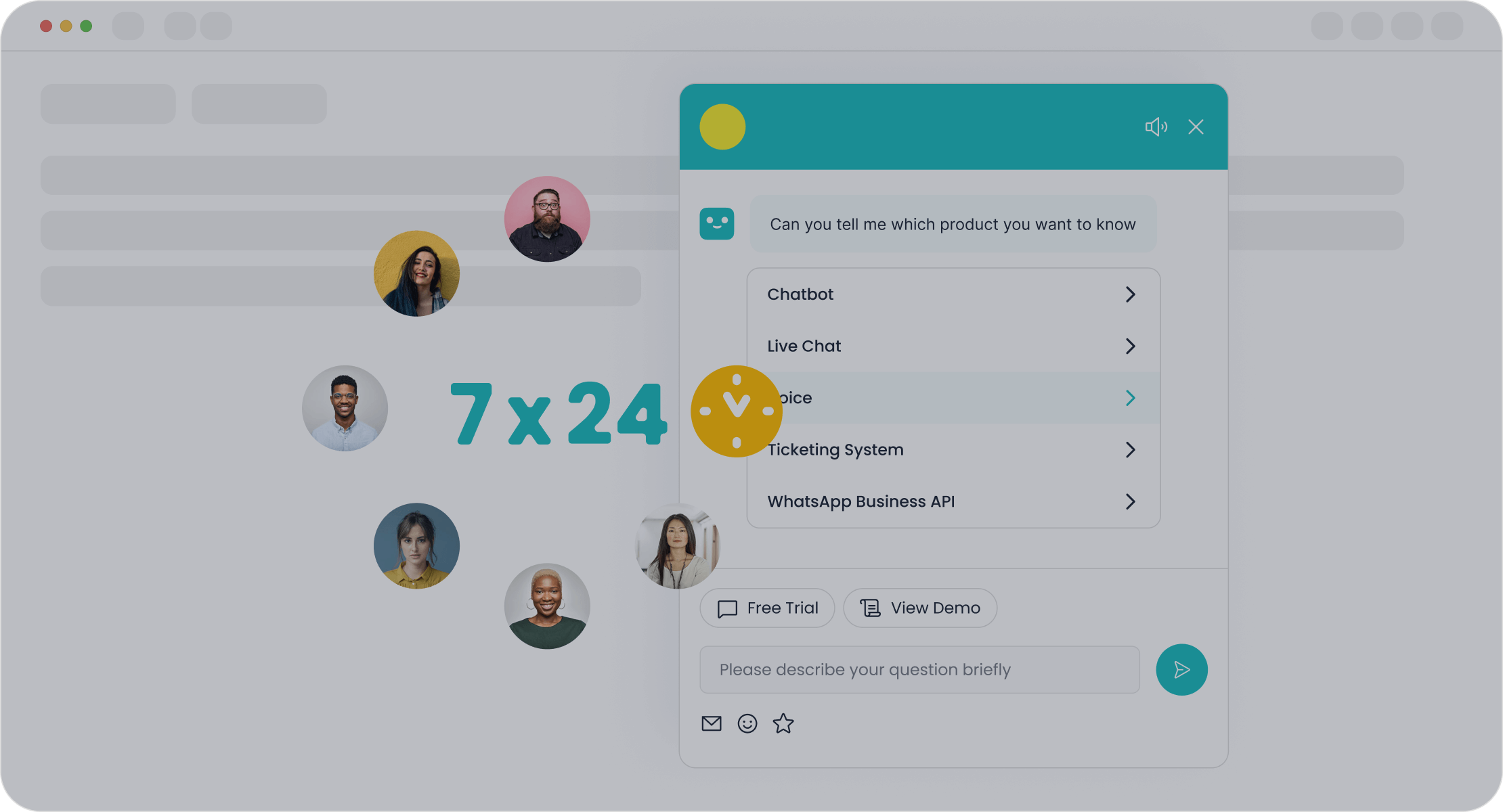
E-Commerce Chatbot Success Stories
E-commerce businesses are thriving with the help of chatbots. These conversational tools simplify shopping, boost sales, and improve customer engagement. For instance, Michael Kors introduced Shopping Muse, a generative AI assistant, to provide personalized recommendations. This move increased their conversion rates by 15-20% while enhancing customer satisfaction. Similarly, Dominos created a chatbot on Facebook Messenger, making pizza ordering seamless and fun. Kia also saw a jump in website conversions from 7% to 21% by using a chatbot to guide customers through their buying journey.
Here’s a quick look at these successful chatbot examples:
| Company | Implementation Description | Conversion Rate Improvement | Additional Benefits |
|---|---|---|---|
| Michael Kors | Integrated Mastercard's generative AI assistant, Shopping Muse, for personalized recommendations. | 15-20% | Improved customer satisfaction and increased sales. |
| Dominos | Developed a chatbot on Facebook Messenger for a seamless pizza ordering experience. | N/A | Enhanced brand awareness and customer engagement. |
| Kia | Increased website conversion rate significantly through chatbot assistance. | 7% to 21% | Consistent sales experience across channels. |
These examples show how e-commerce chatbot solutions can transform online shopping experiences. Sobot’s chatbot offers similar benefits, with features like proactive messaging and multilingual support, helping businesses achieve higher customer satisfaction and conversions.
Sobot's Chatbot Transforming Customer Service for OPPO
OPPO, a global leader in smart devices, faced challenges during peak shopping seasons. High inquiry volumes overwhelmed their support team, leading to delays. By integrating Sobot’s chatbot, OPPO automated repetitive queries, allowing human agents to focus on complex issues. This human-machine collaboration improved efficiency and reduced response times.
The results were remarkable. OPPO achieved an 83% chatbot resolution rate and a 94% positive feedback score. Their repurchase rate also increased by 57%. Sobot’s chatbot didn’t just streamline operations; it elevated customer engagement and satisfaction. OPPO’s success highlights how a well-designed sales chatbot can transform customer service in e-commerce.
Chatbot Applications in Healthcare and Financial Services
Chatbots aren’t just for e-commerce. They’re making waves in healthcare and financial services too. In healthcare, chatbots schedule appointments, provide instant medical advice, and even assist in patient monitoring. A study published in the British Medical Journal found that AI chatbots like Ada Health identified 99% of conditions accurately, almost matching human doctors. Together, they provided safe advice 97% of the time.
In financial services, chatbots simplify tasks like balance inquiries and fund transfers. They also reduce average handle times by 20%, improving operational efficiency. By 2022, healthcare chatbots alone saved $3.6 billion globally, proving their value in cost savings and efficiency. Whether it’s improving patient engagement or streamlining financial operations, chatbots are reshaping industries beyond e-commerce.
Examples of Chatbots Enhancing Customer Engagement
Chatbots are revolutionizing how businesses connect with their customers, creating engaging and interactive experiences. Let’s explore some chatbot examples that showcase their ability to captivate users and drive results.
-
Boosting Retention with Personalized Interactions
Imagine a chatbot that remembers your preferences and tailors its responses just for you. That’s exactly what Starbucks achieved with its chatbot. By offering personalized drink recommendations and allowing users to place orders directly, Starbucks increased customer retention and satisfaction. -
Driving Conversions Through Proactive Engagement
Sephora’s chatbot is another great example. It doesn’t just wait for customers to ask questions—it actively engages them. By offering makeup tutorials and product suggestions, Sephora’s chatbot has significantly boosted conversion rates. -
Streamlining Customer Support
Sobot’s chatbot takes engagement to the next level by combining efficiency with personalization. It handles multiple queries simultaneously, reducing bounce rates and improving flow completion rates. With features like multilingual support and omnichannel integration, it ensures customers feel heard and valued across all platforms.
Here’s a quick look at key metrics that highlight how chatbots enhance engagement:
| Metric | Description |
|---|---|
| Average Conversation Length | Measures how long users interact with the chatbot, reflecting engagement levels. |
| Retention Rate | Tracks how many users return to use the chatbot, showcasing its effectiveness. |
| Flow Completion Rate (FCR) | Indicates the percentage of conversations that reach their intended goal, such as completing a purchase. |
| Customer Satisfaction Score | Direct feedback from users, showing how well the chatbot meets their needs. |
These chatbot examples prove that when done right, chatbots can transform customer interactions. Whether it’s driving conversions, improving retention, or streamlining support, they’re a must-have tool for modern businesses.
Tip: Focus on creating a chatbot that aligns with your brand’s voice and values. A well-designed chatbot can turn casual visitors into loyal customers.
Features Behind Successful Customer Service Chatbots
Importance of Natural Language Processing (NLP)
Have you ever wondered how chatbots understand what you’re saying? That’s where Natural Language Processing (NLP) comes in. NLP enables chatbots to interpret and respond to human language in a way that feels natural. It’s the secret behind their ability to answer questions, detect emotions, and even predict what you might ask next.
For example, research shows that NLP-powered chatbots can accurately share complex information, like medical guidelines, or even monitor caregiver stress levels. This makes them invaluable in industries like healthcare and education. With NLP, customer service chatbots can handle nuanced queries, ensuring your customers feel understood and valued.
Sobot’s chatbot leverages advanced NLP to deliver precise and context-aware responses. Whether it’s resolving a complaint or guiding a customer through a purchase, NLP ensures every interaction feels seamless.
Multilingual and 24/7 Support Capabilities
Imagine running a business that serves customers across the globe. How do you ensure everyone gets the help they need, no matter the time or language? That’s where multilingual and 24/7 support capabilities shine.
AI chatbots, like Sobot’s, can communicate in multiple languages and operate round-the-clock. This means your customers can get assistance in their native language, whether it’s 2 PM or 2 AM. Studies show that 64% of consumers find 24/7 availability helpful, and multilingual support boosts customer satisfaction by making interactions more inclusive.
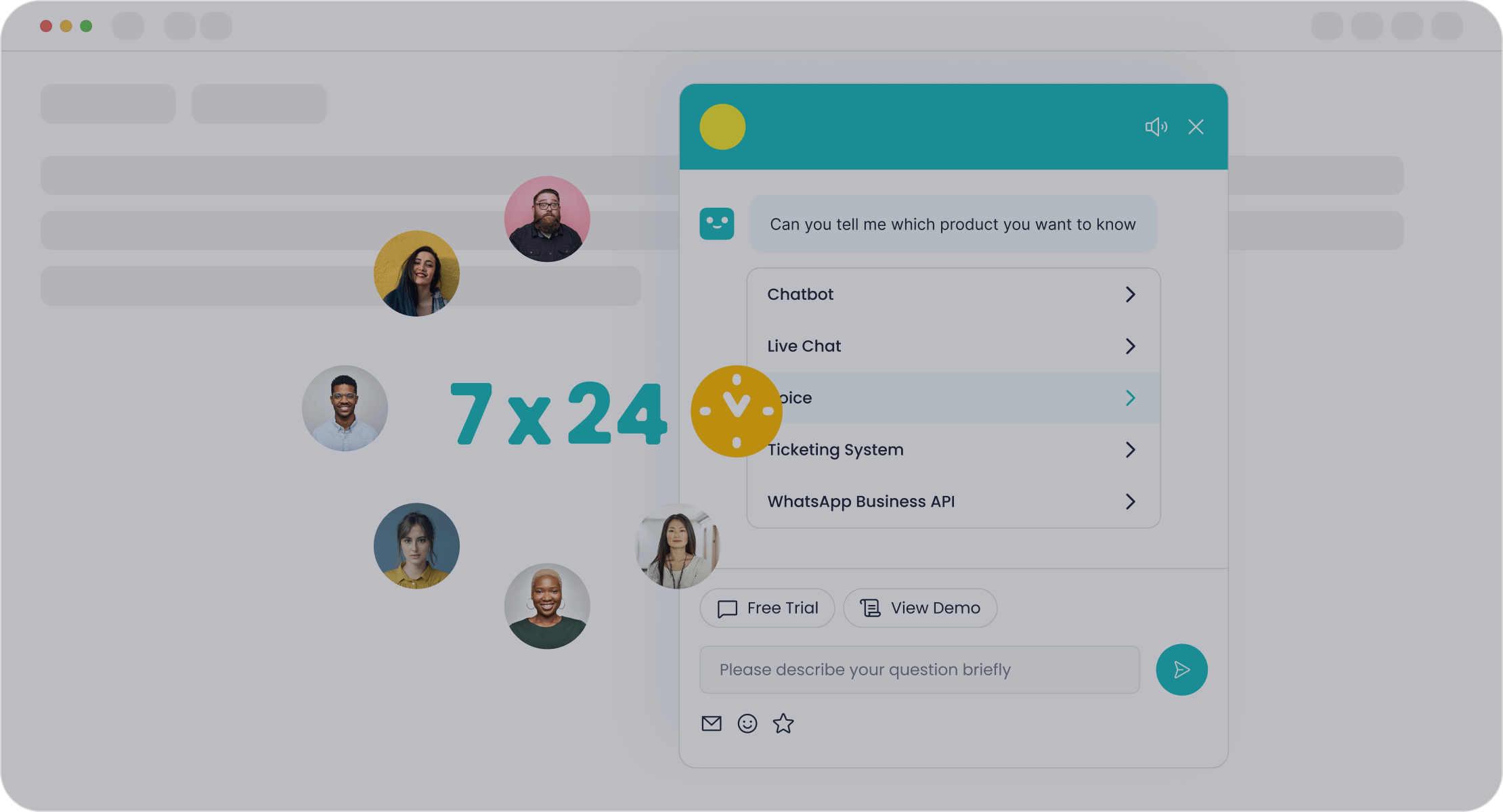
Here’s a quick look at the benefits:
| Benefit | Description |
|---|---|
| Increased Accessibility | Accommodates non-native speakers for a more inclusive experience. |
| Broadened Market Reach | Overcomes language barriers to capture global markets. |
| Improved Customer Satisfaction | Builds trust and loyalty by offering support in native languages. |
| Competitive Advantage | Stands out by providing multilingual service where others don’t. |
Sobot’s chatbot takes this a step further by offering real-time translation and proactive support, ensuring your customers always feel heard.
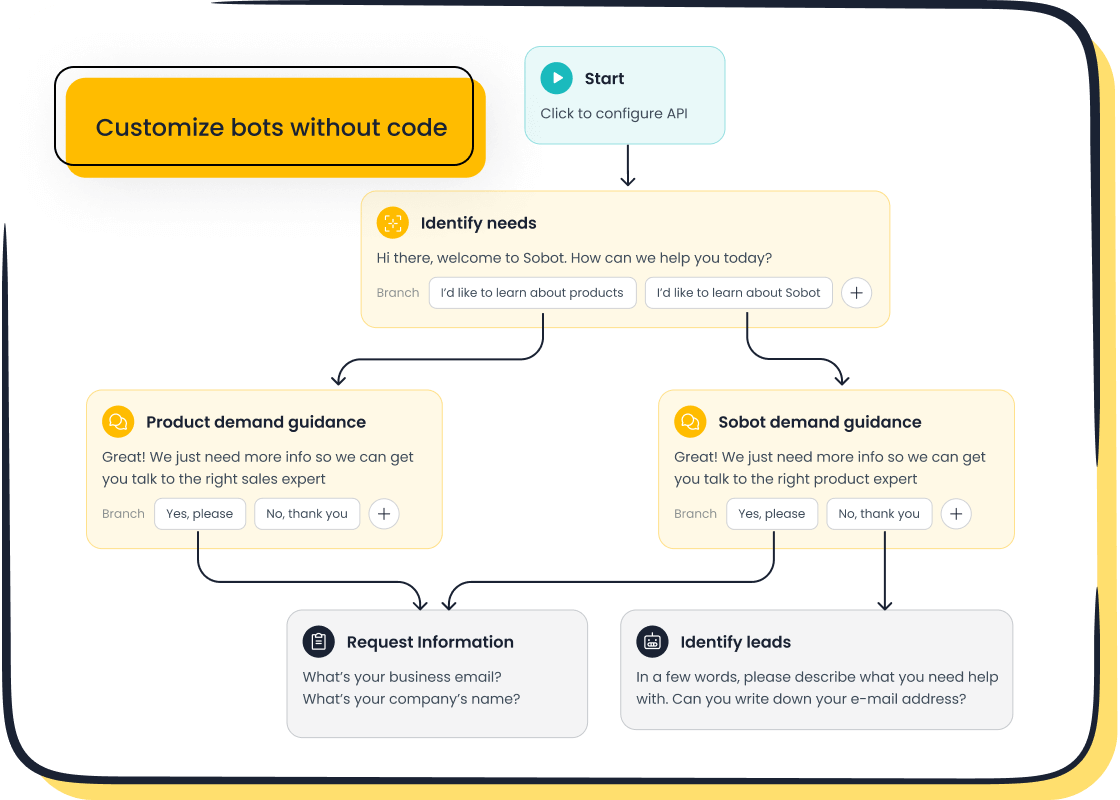
Integration with CRM and Business Tools
What if your chatbot could do more than just chat? By integrating with CRM and business tools, it can. This feature allows chatbots to access customer data, automate workflows, and provide personalized experiences.
For instance, Sobot’s chatbot connects seamlessly with platforms like Salesforce and Shopify. This integration helps businesses analyze customer behavior, automate repetitive tasks, and even tailor marketing campaigns. Studies show that businesses using integrated chatbots save up to 30% on customer service costs while improving satisfaction.
Here’s why integration matters:
- It automates routine tasks, freeing up your team for complex issues.
- It provides instant support, improving response times and trust.
- It offers actionable insights into customer preferences, helping you refine your services.
With Sobot’s chatbot, you can unify your customer interactions and streamline operations, making your business more efficient and customer-focused.
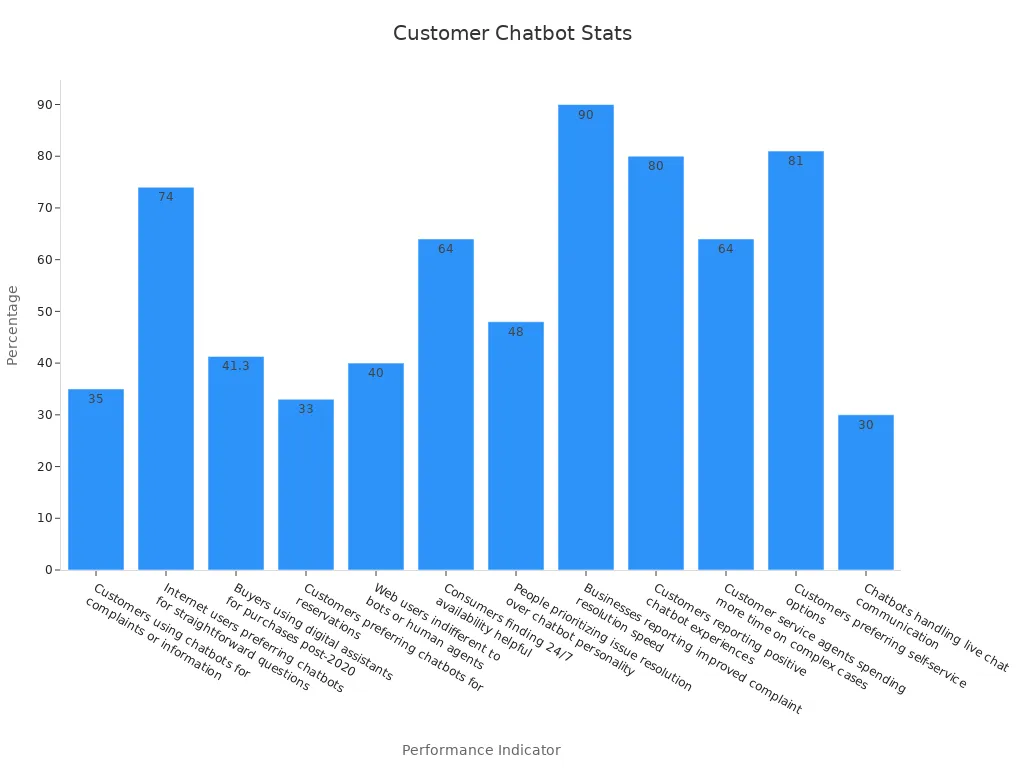
Tip: Start by integrating your chatbot with your CRM. This ensures a smooth flow of customer data and enhances personalization.
Continuous Learning and Optimization
Have you ever wondered how a chatbot keeps getting better over time? It’s not magic—it’s continuous learning and optimization. This process ensures your chatbot stays relevant, accurate, and helpful as your business grows and customer needs evolve.
Here’s how it works. Every interaction your chatbot handles generates valuable data. By analyzing this data, you can identify patterns, common questions, and areas where the chatbot might need improvement. For example, if customers frequently ask questions the chatbot can’t answer, you can update its knowledge base to fill those gaps. This keeps your chatbot sharp and ready for anything.
Optimization doesn’t stop there. You can also tweak your chatbot’s responses to make them more engaging or accurate. Let’s say your chatbot is helping customers track orders. If users often ask follow-up questions, you can adjust the chatbot to provide more detailed tracking information upfront. This small change can make a big difference in customer satisfaction.
Sobot’s chatbot takes optimization to the next level. It uses AI to learn from every interaction automatically. This means less manual work for you and a smarter chatbot for your customers. Plus, Sobot’s reporting tools make it easy to track performance metrics like resolution rates and customer satisfaction scores. These insights help you fine-tune your chatbot for maximum impact.
Continuous learning isn’t just about fixing problems—it’s about staying ahead. By regularly updating your chatbot, you ensure it meets your customers’ needs today and tomorrow. Think of it as giving your chatbot a brain upgrade. The result? Happier customers, smoother operations, and a chatbot that feels like part of your team.
Pro Tip: Schedule regular reviews of your chatbot’s performance. Even a quick monthly check can uncover opportunities for improvement.
Practical Tips for Businesses Considering Chatbot Integration
Identifying Key Use Cases for Your Business
Before diving into chatbot integration, you need to pinpoint where it will make the biggest impact. Start by identifying repetitive tasks that consume your team’s time. For example, chatbots excel at handling FAQs, tracking orders, and providing basic troubleshooting. If your business relies heavily on lead generation, chatbots can replace traditional forms, converting 28% of website visitors into leads.
Think about customer engagement too. Chatbots can promote loyalty programs or gather feedback through surveys. In industries like e-commerce, they simplify sales by offering quotes and guiding customers through purchases. For healthcare, chatbots assist with appointment scheduling and patient monitoring. These use cases highlight how chatbots can transform operations across different sectors.
Here’s a quick overview:
| Use Case | Description |
|---|---|
| Hyper-Customization at Scale | Personalization is crucial; 47% of consumers value tailored deals, and AI can create unique experiences for users. |
| Customer Support Assistance | AI chatbots assist customer service reps, with predictions that 50% of organizations will deploy them by 2026. |
| Supercharging Marketing Strategies | 48% of executives see AI as a key driver in marketing, enhancing engagement and conversion rates. |
| Generative AI-Powered Chatbots | These chatbots engage in natural dialogues, providing personalized and efficient customer experiences. |
By focusing on these areas, you’ll ensure your chatbot delivers maximum value.
Choosing the Right Chatbot Platform
Not all chatbot platforms are created equal. Choosing the right one depends on your business needs. Look for platforms with strong AI capabilities to handle complex conversations. Customization is another key factor. A chatbot that aligns with your brand’s voice and adapts to your workflows will feel more natural to your customers.
Integration matters too. Platforms that connect easily with tools like CRMs or e-commerce systems streamline operations. For example, Sobot’s chatbot integrates seamlessly with Salesforce and Shopify, making it ideal for businesses that want to unify customer interactions.
Here’s a comparison of popular platforms:
| Company | Type | Platform | Fees |
|---|---|---|---|
| Ochatbot | Text, Live Chat | Websites, eCommerce, Facebook | Free, $69, $109, $495 |
| IBM Watson | Text, Voice | Websites, Facebook, SMS | Requires contact |
| Intercom | Text, Live Chat | Websites, Facebook | $67, requires contact for support and marketing |
When evaluating platforms, consider their AI strength, customization options, and integration capabilities. These factors will help you choose a chatbot that fits your business like a glove.
Testing and Optimizing Chatbot Performance
Once your chatbot is live, testing and optimization are crucial. Start by monitoring key metrics like resolution rates, customer satisfaction scores, and flow completion rates. If your chatbot struggles with certain queries, update its knowledge base to fill those gaps.
Optimization isn’t just about fixing problems—it’s about enhancing the experience. For instance, if customers frequently ask for order updates, tweak your chatbot to provide detailed tracking information upfront. This small adjustment can significantly improve satisfaction.
Sobot’s chatbot simplifies this process with built-in reporting tools. It automatically learns from interactions, reducing the need for manual updates. Plus, its analytics help you identify trends and refine responses. Regular reviews ensure your chatbot stays sharp and continues to meet evolving customer needs.
Tip: Schedule monthly performance reviews to uncover opportunities for improvement. Even minor tweaks can lead to major gains in customer satisfaction.
Leveraging Sobot's Chatbot for Maximum ROI
Getting the most out of your chatbot investment isn’t just about deploying it—it’s about using it strategically. Sobot’s chatbot is designed to deliver maximum ROI by enhancing efficiency, cutting costs, and boosting conversions. Let’s explore how you can leverage it to achieve these results.
1. Automate Repetitive Tasks
Imagine freeing up your team from answering the same questions over and over. Sobot’s chatbot handles FAQs, order tracking, and basic troubleshooting autonomously. This reduces agent workload by 70% and saves up to 50% on operational costs. For example, OPPO used Sobot’s chatbot to automate repetitive queries, achieving an 83% resolution rate and a 57% increase in repurchase rates.
2. Boost Conversions with Smart Engagement
Chatbots don’t just solve problems—they drive sales. Sobot’s chatbot uses proactive messaging and real-time intent assistance to guide customers through their buying journey. Businesses have reported a 20% increase in conversions by using these features. Chatbot examples like Sephora’s makeup assistant show how engaging customers at the right moment can lead to higher sales.
3. Personalize Customer Interactions
Personalization is key to building trust. Sobot’s chatbot integrates with CRM systems to deliver tailored responses based on customer data. This approach improves satisfaction and loyalty. Studies show that personalized experiences can increase customer retention by 30%.
4. Optimize Performance with Analytics
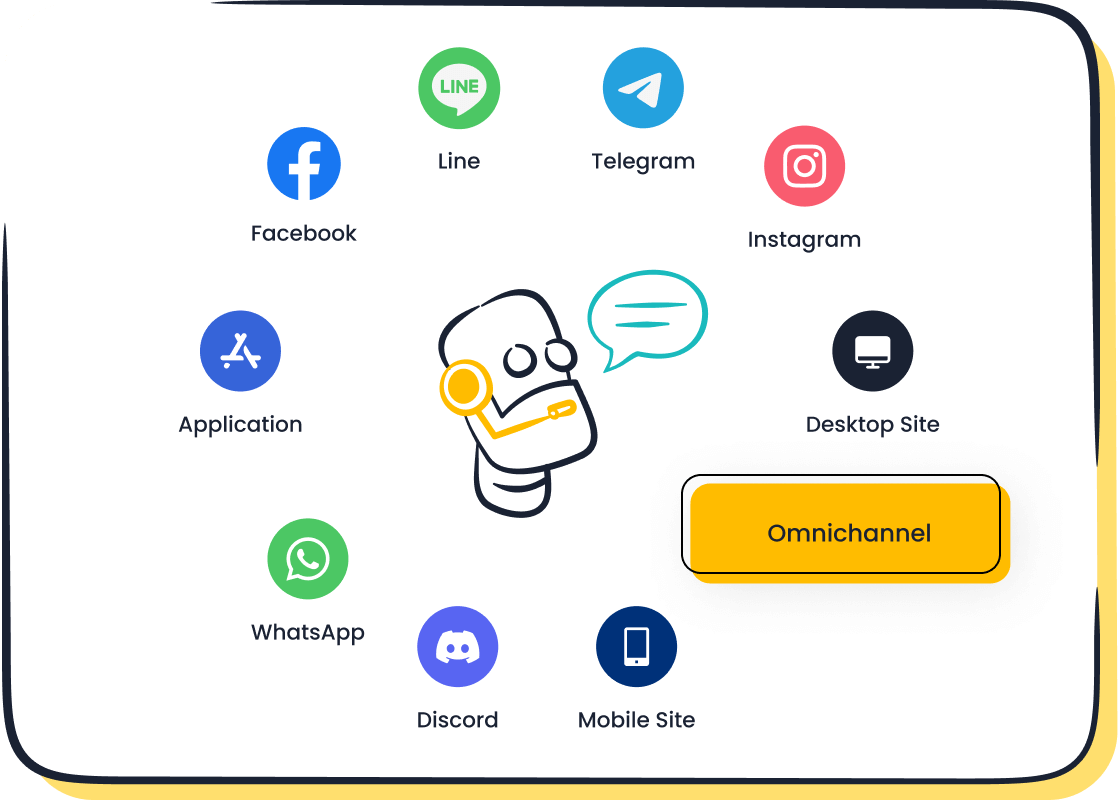
Sobot’s chatbot comes with built-in reporting tools that track metrics like resolution rates and customer satisfaction scores. These insights help you refine your chatbot’s responses and identify areas for improvement. Regular optimization ensures your chatbot stays effective and relevant, maximizing its ROI over time.
By leveraging Sobot’s chatbot, you’re not just investing in technology—you’re investing in a smarter, more efficient way to connect with your customers. Whether it’s automating tasks, driving conversions, or personalizing interactions, Sobot’s chatbot helps you achieve measurable results that grow your business.
Tip: Start small by automating FAQs, then expand to more complex tasks as your chatbot learns and evolves.
AI chatbots are changing the game for businesses, and the numbers prove it. They’re expected to save up to 2.5 billion work hours by 2024, with 80% of companies planning to adopt them by 2025. These tools handle 80% of routine tasks, cutting first response times by 37% and reducing customer service costs by 35%. Companies using AI chatbots, like Sobot’s, have seen revenue grow by 32% while delivering an 80% positive customer experience rate.
Sobot’s chatbot stands out with its ability to personalize interactions, operate 24/7, and integrate seamlessly across platforms. Whether you’re in retail, healthcare, or finance, adopting a chatbot can help you stay competitive and meet your customers’ evolving expectations. The future of customer service is here—are you ready to embrace it?
FAQ
What is a chatbot, and how does it work?
A chatbot is an AI-powered tool that interacts with users through text or voice. It uses natural language processing (NLP) to understand queries and provide accurate responses. For example, Sobot’s chatbot can answer FAQs, guide users, and even assist with purchases—all in real time.
Can a chatbot handle multiple languages?
Yes, many chatbots, including Sobot’s, support multiple languages. This feature ensures your customers receive help in their preferred language, no matter where they are. Multilingual chatbots make businesses more accessible and inclusive.
How do I train a chatbot for my business?
Training a chatbot involves feeding it a knowledge base of FAQs, articles, and other resources. Sobot’s chatbot simplifies this with a no-coding-required interface. You can easily upload PDFs, text snippets, or Excel files to get started.
Are chatbots secure for handling customer data?
Absolutely! Modern chatbots, like Sobot’s, prioritize data security. They use encryption and secure APIs to protect sensitive information. Regular updates also ensure compliance with data protection regulations, keeping your customers’ trust intact.
What industries benefit the most from chatbots?
Chatbots are versatile and benefit industries like retail, healthcare, and finance. For instance, in retail, they assist with product recommendations. In healthcare, they schedule appointments. Sobot’s chatbot adapts to various industries, making it a valuable tool for any business.
See Also
Steps to Build a Successful Website Chatbot
Key Advantages of Using Chatbots on Websites
Best 10 Chatbots to Enhance Websites in 2024